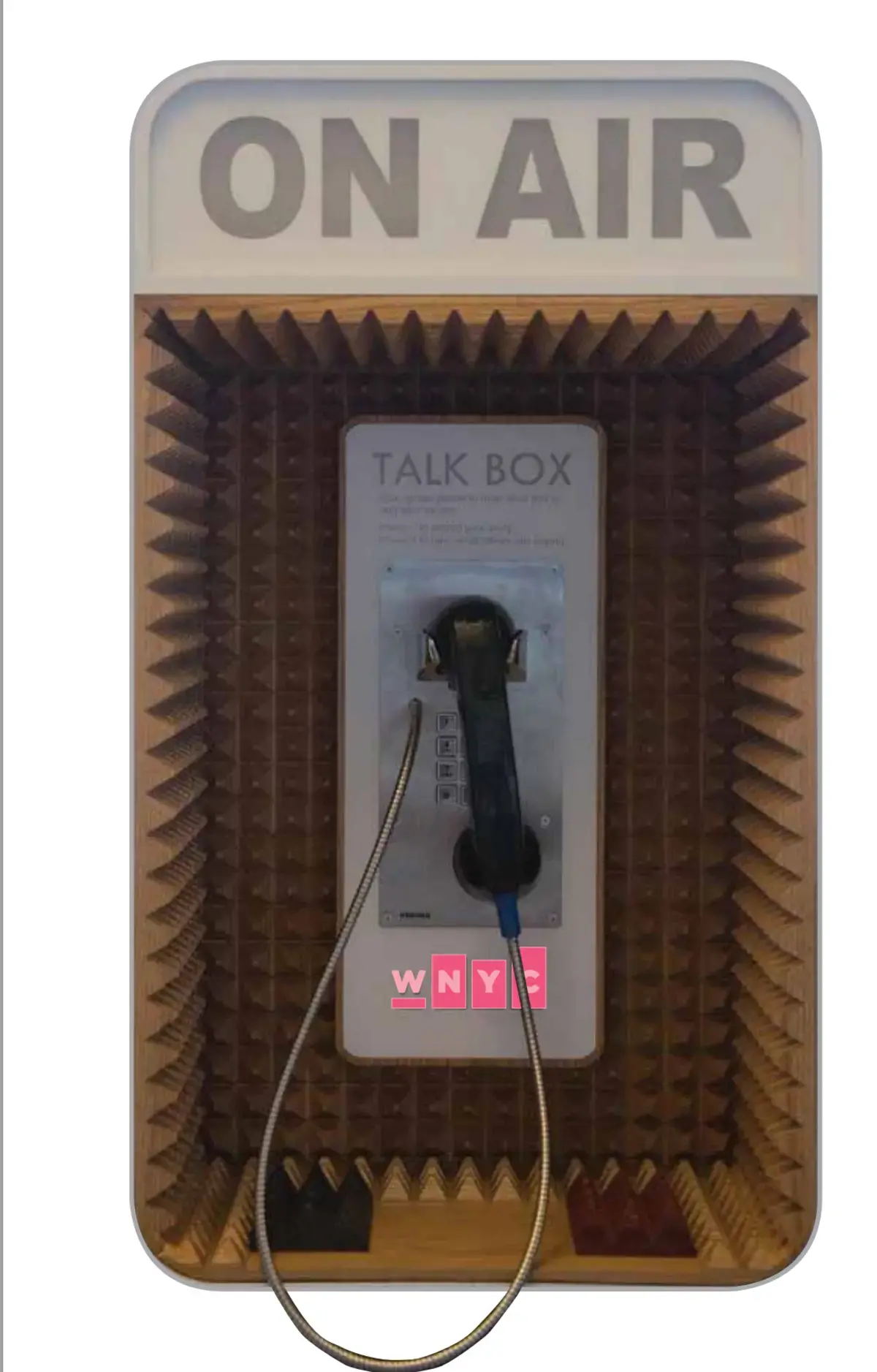The Making of WNYC's TalkBox
Create a phsyical object that provides residents with a way to speak out on issues that are important to them and their community. It has to be replicable. And it has to repurpose a piece of city infrastructure. A story by Janet Lape Marsden

This was the design challenge that New York’s flagship public radio station posed to SHoP Architects in late 2014, when the Knight Foundation awarded them a grant to prototype a new way to engage underrepresented audiences in their programming. And it was the challenge that Nare Filiposyan ’17 took up during her Field Work Term internship with SHoP last winter.
“The proposal came together just after the Eric Garner strangling,” said Bennington College trustee Matthew Clarke, the architect who shepherded the project for SHoP and Filiposyan’s FWT supervisor. “A lot of voices and concerns weren’t being picked up by mainstream media.”
WNYC wanted to open a dialogue in neighborhoods across the city—not just by creating thought-provoking content, but by establishing a physical link between the communities and the airwaves.
The public radio affiliate enlisted SHoP and its famed in-house fabrication team—the Fab Lab—to conceive and construct that link.
First and foremost, said Clarke, the design had to appeal to and engage audiences that weren’t necessarily listening to public radio. Among the team’s other design considerations: It had to be portable. It had to be replicable. And it had to repurpose a piece of city infrastructure: the public pay phone.
Out of these constraints, the idea for TalkBox was born.
As envisioned by the team, TalkBox would prompt people to record their thoughts on urgent issues of the day. The first question would be “What does Eric Garner mean to you?”—posed on the anniversary of Garner’s death at the hands of policemen, in the Staten Island neighborhood where he was killed.
“These are very socially, politically, economically charged questions,” Filiposyan says. “The biggest and most fascinating [design question] for me was how do you create an environment on a sidewalk or in a public space intimate enough that people feel they can pick up the phone and share what they’re thinking?”
Filiposyan studies architecture and philosophy at Bennington, and is particularly interested in how the physical environment defines the kinds of activities performed in a space, who has access to those activities, and who does not.
In addition to researching the cultural history of public phones and the ways in which they are being put to new uses (as wifi hotspots, as lending libraries, as public art), Filiposyan became the team’s expert on city regulations.
“What’s considered permanent, what’s not? How far from the sidewalk does a structure need to be? How long does it take to get a project approved?” All of these details informed the design.
To entice passersby, the team modeled TalkBox after a recording booth, complete with what is made to look like a soundproof baffling slipped into the shell of a kiosk-style pay phone and an “On Air” sign that lights up when the receiver is picked up.
SHoP’s FabLab constructed the final prototype from a pay phone bought online, and worked with WNYC’s engineers to replace the internal circuitry with wireless technology that would link the caller directly to WNYC. Filiposyan mapped and designed a seamless and intuitive user experience. “We didn’t want there to be any challenges between the action of picking up the phone and communicating with WNYC,” said Clarke.
“Nare had to invent her own way of thinking about this,” Clarke added. “None of us had done a project like this before.”
Its first day on location, TalkBox drew more than 30 responses. It’s since gone to Newark, NJ, to ask residents about their public schools and to Brooklyn to take up the question of gentrification. It’s been set up outside The Public Theater prompting theatergoers to consider Shakespeare’s relevance, and at Adelphi University asking, “What is making you anxious this election season?” You can hear selected answers and track where TalkBox will be next on Twitter @WNYCTalkBox.
And Nare Filiposyan, what question would she have TalkBox ask next?
“Where should I be?”
When you place TalkBox at The Public Theater, she explained, you know who’s going to be there, you may even be able to predict some of their answers. But if you ask people where TalkBox should go next, you open yourself to the unexpected.
And that’s what TalkBox is designed to do: “I’m going to be here and listen to what people are telling me.”